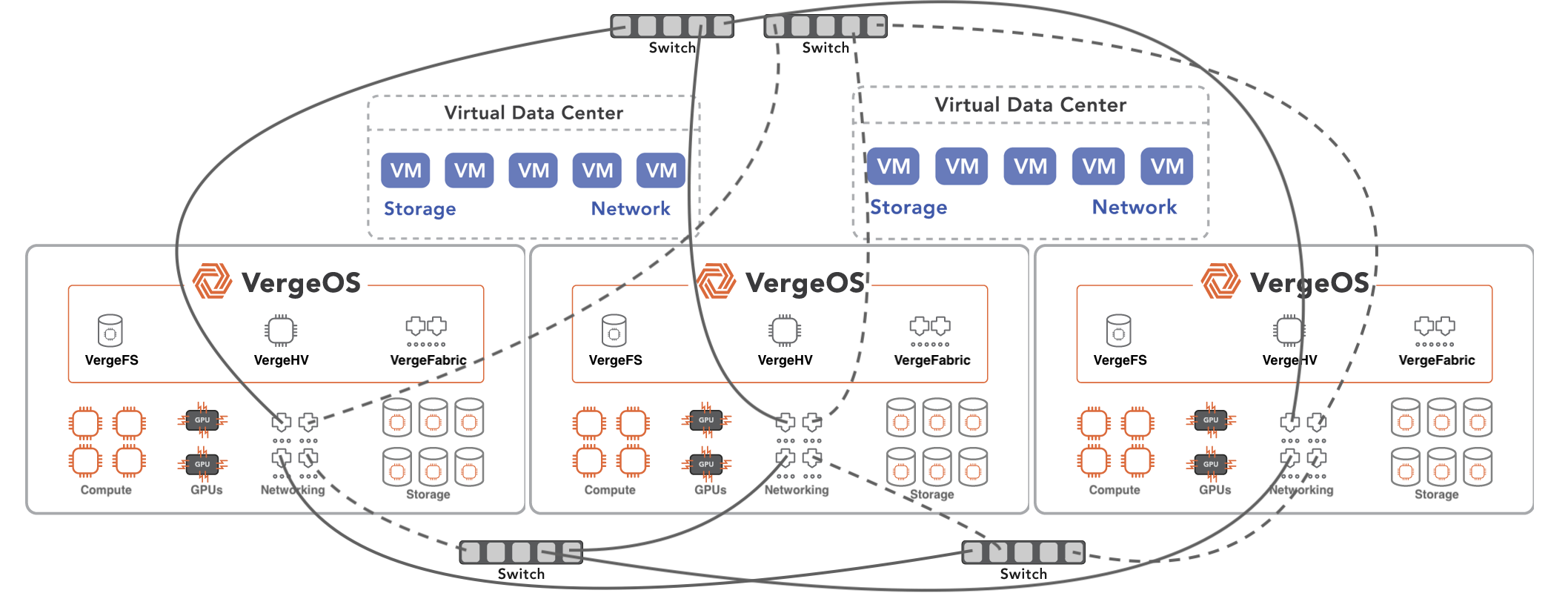When IT considers a VMware alternative, calculating VMware migration costs is critical in understanding the total cost of ownership (TCO). The path to the alternative should be seamless and staged so the organization can transition at a comfortable pace, but IT should determine that pace, not the software. The longer and more complex the migration cycle, the higher the overall TCO of the alternative is. These costs include running dual systems, application outages, and extra IT staff hours. The ideal alternative should enable IT to perform the migration as fast as they are comfortable, and with as minimal an outage as possible.
Prerequisite of a VMware Migration

The first step in calculating VMware migration costs is not migration planning. You can’t plan the migration until you know the requirements of the VMware alternative you are selecting. Understanding the requirements of the alternative goes beyond the migration function itself. Many VMware alternatives require that you replace your existing servers with a group of their servers as part of a “turnkey” solution or one of their “certified” vendor configurations. With other solutions, the process is so slow and disruptive that you have to have two groups of servers to sustain operations while you migrate.
These requirements mean that you must have two stacks of servers running while you transition, which could take six months or more because of the slowness of the process. These two stacks have a ripple effect, consuming double the network ports, potentially double the storage, doubling the power and cooling requirements, and doubling the data protection requirement.
The Cost of VMware Migration Time
While many VMware alternatives have a VMware migration capability, understanding the time it takes to transfer and convert virtual machines (VM) between the two platforms is the critical next step in calculating VMware migration costs. Some alternatives take 10-30 minutes per VM, while others require creating a new VM, installing the application, and copying the data over, which to get it right could take hours per VM. In most cases, these are not batch jobs that can be set to run and returned to later; IT needs to keep a careful eye on the process to ensure it completes successfully.
The Cost of VMware Migration Testing

The transfer and conversion time impacts the ability to test workloads on the alternative before the final cut-over. It is also an essential aspect of calculating VMware migration costs. A common-sense process is to migrate a group of VMs to the VMware alternative, test them for a few days to ensure they work as expected, and then do a final migration. That means that the conversion time is felt twice, which now means each VM will require 30-90 minutes of conversion time in total. If the VM needs to be shut down for all of this migration time, that is a significant outage.
The Cost of VMware Migration Application Outages
The time it takes to initially test and then permanently migrate VMs to the VMware alternative also impacts when you can migrate. If there is a significant application outage, you can’t migrate during the typical workday or over a few weekday evenings. You will need to allocate multiple weekends to the process. The when migration component means you must run dual systems longer and complicates network configuration and data protection since now you must continue to protect the legacy VMware environment and protect the new hypervisor environment as each week it gains a few more production applications.
The Cost of Learning The VMware Alternative
The final component in calculating VMware migration costs is the cost of learning the new platform. If it takes you weeks or months to learn how to use the VMware alternative effectively, then it takes longer for you to test migrated VMs before moving them to production. A long learning curve consumes more time to complete the migration, increasing the time you need to run dual systems.
Slow Migration Means New Hardware
While many VMware alternatives require buying new servers, a few claim to use your existing hardware. However, a slow and complex migration process eliminates that possibility. The customer is forced to buy new hardware and run parallel systems to move through the sluggish migrate, test, and migrate cycle again. As a result, they will need to be prepared to run these parallel systems for a long time.
VergeOS – Migrate Better
Calculating VMware migration costs is easy with VergeIO. There are none. We have integrated its VMware migration functionality directly into the core of VergeOS. Log VergeOS into your vCenter to start a migration, select the VMs you want to migrate, and click the migrate button. The migration function transfers the VM data to VergeOS as fast as VMware can send it. The process stores the VMware VMs as backup files; you can even update them with change block tracking (CBT). When you need to test those VMs under VergeOS, converting them to a VergeIO VM takes a few seconds, and you are all set to begin testing.
The process is so seamless and fast that many customers will select and copy all their VMs at once, again keeping them updated with CBT. They will then use VergeOS as a robust DR solution with our ioProtect functionality. ioProtect enables the initial investment in VergeOS to add value while you are migrating. As you are performing your testing, the original VMware VMs are kept up to date, so if you need to re-test, the VMware version is always up to date. When you are ready to make the final cutover, perform one more quick data sync, shut down your VMware VM, and start your VergeOS VM. The VM is only down for the 20-30 seconds it takes to boot, minimizing any production impact.
The speed of VergeOS’s migration capabilities makes it practical to use existing hardware and do an “in-place” migration. All you have to do is clear off one physical server, load VergeOS onto it, and then begin the migration process, clearing the VMs from another host and starting them under VergeOS. As each server is freed of its VMware responsibilities, it can be added to the VergeOS instance. We’ve employed this process many times to enable customers to utilize their existing hardware without disrupting users.
VergeIO’s zero-cost migration capabilities are just one way to reduce the total cost of data center infrastructure. Thanks to VergeOS’ efficiency, you’ll be able to slow down the pace at which you buy servers, lower the cost of storage capacity, and simplify operations. At the same time, you experience the peace of mind of an infrastructure-wide approach to data protection and high availability that is the best in the industry.
Want to learn more? Use this link to arrange a time for us to conduct a technical whiteboard session on how VergeOS’ elegant architecture is uniquely positioned to deliver on all of these promises.



